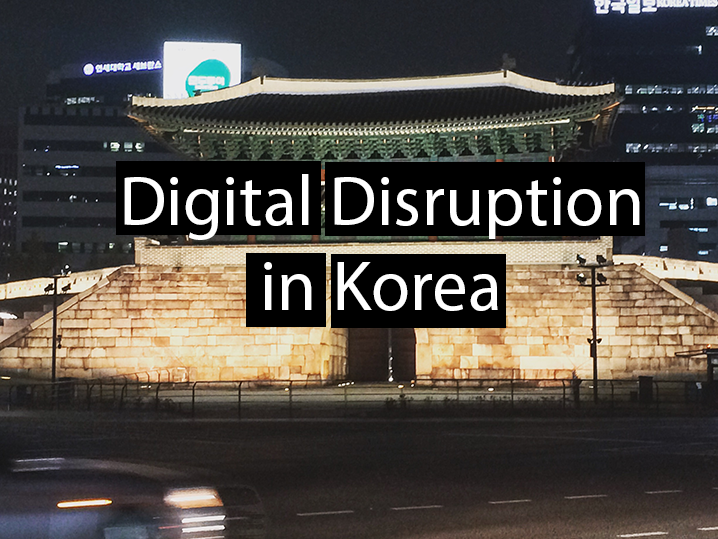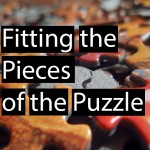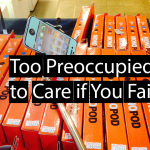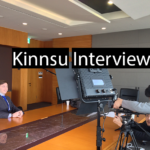Kurtosys Interview: Digital Disruption in Korea
This interview was first published by Kurtosys on September 25, 2017 under the title “How South Korea’s mutual fund pioneer embraces digital disruption” and has been reproduced here with permission.
An Interview with Matthew Morgan, Global Strategic Marketing & Business Development Manager at Mirae Asset Global Investments

The asset management industry has been notoriously slow in the adoption of technology. Competition and now better regulation are fueling the pressure for the industry’s need to modernize. South Korea is well known as the first country on the globe to invent and adopt the newest technologies; the mutual fund pioneer of Seoul, Mirae Asset Global Investments, is doing just that. We had the opportunity to speak with Matthew Morgan, Mirae Asset’s Global Strategic Marketing & Business Development Manager, to find out how they embrace technology and which platforms they like the best.
Tell us a little bit about your role at Mirae Asset Global Investments
I work in the Global Strategic Marketing & Business Development Division located in the Seoul Headquarters, reporting to the C-Suite for a number of functions, notably in marketing, strategy, and business development. The group’s core mandate is to increase organization-wide revenues with transversal responsibilities, spanning a matrix of dozens of colleagues throughout 12 offices in a firm of nearly 700 employees.
Our division seeks to strategically develop relationships with clients and prospects by deploying capital across key marketing and sales dimensions, from content creation, to systems and infrastructure, promotion and advertisements, and website and online development. I perform analysis regarding business performance, capability assessments, market research, competitive benchmarking, investment strategy proposals, due diligence questionnaires, corporate development, and technology implementation. As a whole, we strive to act as a center of excellence to consult and centrally project manage innovation adoption and global initiatives with numerous internal and external partners to lead organizational change throughout subsidiaries.
During my tenure of more than 4.5 years, global firm-wide assets under management have almost doubled from USD 58 bn in February 2013 to circa USD 110 bn in August 2017. In that timespan, there have been several acquisitions within the wider Mirae Asset Financial Group, most significantly Mirae Asset Daewoo, as part of a larger consolidated international diversification drive that is now underway. So there has indeed been rapid growth and development on many fronts as the firm progresses in business lines and geographical footprints. Such dynamism is often accompanied by a host of opportunities to seize and a fair bit of challenges to manage as part of the associated “growing pains.”
As a whole, however, I’m grateful to experience all of these changes as they have kept me engaged and offered an accelerated pace of learning curves to confront and surmount. Perhaps more importantly, I’ve been able to meet exceptionally talented, ambitious, and passionate professionals from a broad cross-section of companies – e.g., agency/public relations, consulting, media, finance, technology, and journalism – which have been inspirational catalysts from a personal and career development standpoint. I’m fortunate to consider many of these people friends now.
You’ve obviously travelled and worked extensively across the world, could you tell us a little about how your career has led you to work in South Korea?
I’m a firm believer in serendipity as my life is living proof of the concept. I often joke that it wasn’t in my childhood that I had the dream to spend the formative years of my early career entirely in Asia. In hindsight, I was raised traveling as my father was a commercial airline pilot, so living in numerous countries (i.e., Saudi Arabia, France, Vietnam, Japan, Korea, and the US) has seemed most natural and is a mindset that I apply in my occupational trajectory.
I started my career as an intern with the Delegation of the European Union to Vietnam in the Social Sectors Team. I then joined my first post-grad job in Korea and Japan as a business analyst for the French multinational Air Liquide. I tried my hand in public relations with Fleishman-Hillard, and now work in the finance vertical for Mirae Asset Global Investments.
My initial exposure to Korea was as an exchange student nearly a decade ago, and the productive impressions stuck. My professional situation here stems from a series of choices motivated by my aspirations to enter into financial markets in concert with my international orientation, personal interests, adaptability, support network, and polite persistence that altogether combined fortuitously with timing and opportunity.
Seoul is ranked as the world’s “leading digital city” and a “tech capital of the world” – how has this affected the company and your role in digital marketing?
Indeed, Bloomberg has rated Korea as the most innovative country for the past three years running. The country is at the forefront of pushing R&D-based economic growth through bottom-up innovation-led investments. The Internet bandwidth capability in the country is globally unrivalled, and plans are in progress to install a 5G network in PyeongChang in time for the 2018 Winter Olympics before full rollout of 5G commercialization. Looking past the visible aspects of technology, Koreans are keen early adopters and always searching out the next “big thing.” I’m unable to count the number of trends I’ve seen come and go during my time in Seoul, which animates the city with vibrant energy.
I would venture to say that this same mentality permeates the corporate culture of Mirae Asset Global Investments as a forward-thinking organization, especially within the financial services industry. The firm has been a pioneer since its founding: from introducing the first mutual fund in Korea in the late 1990s; international investment diversification and global business expansion in the early 2000s; alternative investment inclusion in the mid-2000s; strategic acquisitions from 2011; and most recently artificial intelligence/innovation deployed in investment asset allocation.
In this light, we have sought to embrace the transformative potential from digitalization and technology-enabled productivity. To that end, we have been able to rapidly experiment and iterate on previous learnings with pilots and multiple trials that start as lean projects and are subsequently evaluated for upward/downward scalability. We certainly have to justify our decision-making with business logic, and we have progressively elevated the level of annual budgets by proving results to secure internal management consensus. We place a lot of emphasis on ‘small wins’ that accumulate to more consequential shifts in how operations are conducted, namely in marketing and sales. The city of Seoul’s dynamism together with Mirae Asset’s entrepreneurial spirit are complementary facilitators that enhance our roles as tech-enabled digital marketers.
Do you see the rapidly expanding world of FinTech disruption as more of a threat or an opportunity to the asset management world?
I see it as both, depending on one’s perspective, place in the economic ecosystem, and a corresponding set of responses. To explain, I believe we are still firmly in the early days of how FinTech start-up players and incumbents will both compete and co-exist. The race is on with many strategic alliances, acquisitions, and in-house developments as disruption unfolds and business models are subject to new challenges and presented with fresh opportunities. It’s no secret that asset management is somewhat of a laggard industry in the way of digital transformation. That said, I think investment management firms are waking up to the value that lies in harnessing data, both in business management and portfolio allocation. Going forward, we’ll likely witness more partnerships between asset management companies and best-in-class organizations – be they start-ups, technology experts, data scientists, consultants, etc. – on both a tactical and strategic level as innovation compounds and machine learning/artificial intelligence extends itself throughout more sectors. Empirically speaking, we have ourselves transitioned into programmatic marketing as the cost-adjusted benefits related to reporting, insights, and optimization were too compelling to ignore versus traditional approaches.
What kind of marketing technology have you invested in recently to improve your digital marketing?
We’re increasingly trying to define our marketing technology as a “stack” of sorts. There’s lots of discussion around AdTech and MarTech, but for our intents and purposes, we roll these notions together.
One milestone in our marketing technology push resides in our partnership with the technology consulting firm DQ&A in the past several months to accelerate our Google DoubleClick programmatic ecosystem, ensure best practice acquisition, and develop future blueprints/rollout plans. They have proven to be invaluable partners in enhancing our digital competency, and we are benefiting from their full-fledged expertise and group of affiliates (e.g., AGCS for HTML-5 based creatives). In Korea, we have worked hand-in-hand with Cafe24 over the course of several years to power our Google high-performance paid search and remarketing strategies. As a collective team, we are endeavoring to encapsulate our digital marketing activities within the suite of DoubleClick (i.e., Campaign Manager, Bid Manager, Search, and Creative Studio) to better measure, track, and deliver bottom-line results from multi-channel, international deployment. This is a complex and resource-intensive initiative, but we are incrementally approaching the problem with the help of consultative partners.
Piloting campaigns with news publications have been quite wide-ranging regarding testing our biases towards media against the numbers. Trade and industry-specific publications have fared well, such as Citywire, FTfm, Bloomberg, as have some of the premium papers, such as The Economist. Most notably, however, we have been caught by surprise by the strength and health of New York Times in audience readership resonance to our campaigns. We are actively intending to consolidate on these good initial flights as we bring our new global website revamp online within the next month to showcase the firm’s value proposition and investment capabilities.
In terms of client relationship management (CRM) software, we have worked with external implementation experts to configure Salesforce as part of a staggered global rollout. The CRM will serve as the conduit between marketing and sales. Marketing automation and email marketing have admittedly been a blind spot for us, but we are now exploring the likes of Marketo, MailChimp, and GetResponse while concurrently considering trade publication bespoke solutions.
Presence is maintained on walled gardens such as LinkedIn, Twitter, YouTube, Facebook to varying degrees, and we have gone through content amplification providers with mixed success. Content-based posts are regularly updated and mirrored throughout these platforms.
Overall, we are constantly on the lookout for best-of-breed offerings as they fit into our marketing technology stack in an additive manner and continuously conduct cost/benefit analyses. One service we are particularly excited by is Smartology for semantic matching of article subject matter with digital banners to drive audiences to relevant branded content destinations.
We noted that Mirae Asset Global Investments have nearly 30k followers on LinkedIn – what’s your general strategy with social media?
In social media, as in digital marketing, we set forth differing key performance indicators against which we determine success. We try to engage in a multi-faceted digital strategy with content as the underlying foundation for the predominance of our brand-building and performance marketing. We set forth pre and post-click metrics and watermarks based on accumulated reference points. Most recently, we have employed Google Tag Manager to define and tag differing variables on our websites and corroborate platform dashboards, Google Analytics, Google DoubleClick to develop more holistic end-to-end touchpoint-to-conversion measurement frameworks. Beyond the click-through rates, cost per mille or cost per clicks, we are seeking to untangle attribution modeling to determine action-adjusted actions from channels while controlling for viewability and other quality factors.
Returning to LinkedIn, we work extensively across their product offering – from inMails to Sponsored Updates, Direct Sponsored Content, and Follower Ads – as a core pillar in our global marketing & sales efforts globally (i.e., Asia, Europe, Americas) that has served us exceptionally well. We have furthermore on-boarded their curated content tool, LinkedIn Elevate to activate internal communication streams and intellectual capital that has been influential with visibility of our portfolio of content and earned employee advocacy.
As we move to white-listed, brand-safe contexts to acquire quality audiences within our digital ecosystem, we will lean progressively on developing more immersive environments for appealing digital journeys and narrative storytelling. We plan to employ first-party CRM-based datasets for direct outreach paired with calibrated remarketing to capture, engage, and re-nurture existing clients & prospects.
Who do you consider to be some of the ‘digital leaders’ in the asset management industry?
The champion giants such as BlackRock and Vanguard obviously are exceedingly prevalent in the space. Peering beyond the top asset managers, we consider the likes of Deutsche Asset & Wealth Management, Robeco, AllianceBernstein, and Oppenheimer, to name a few, as best-in-class providers in their respective categories. There are numerous boutique firms and other newcomers that are leveraging digital/social media to greater effect against which we benchmark ourselves.
What are your views on traditional sales collateral, such as fund fact sheets? Are they ripe for disruption, or still an essential tool for investors?
There are countless articles on the subject extolling the virtues of live data with regards to investment product briefs. I do think, however, that there needs to be a measured approach on a wholesale restructuration of the industry. Sales collateral is adaptive to audience segments with generational differences in how information is searched, synthesized, consumed, and referenced. So, while I still think fund factsheets are important snapshots of a fund strategy’s performance and assets, there is no question that upcoming younger investors such as Millennials will demand more real-time performance numbers. There is a time and place for everything, so just like in the case of FinTech, I don’t think a one-sized approach will fit all needs. Rather, fund factsheets will need to be supplemented by online portals & libraries to illustrate track records in a modular, user-dedicated format.
What are some of the biggest digital pain points you see in financial services?
Orchestrating updates across numerous moving parts from fund factsheets, product pitchbooks, corporate presentations, and database population is a full-scale effort carried out on a monthly and quarterly basis that mobilizes the entirety of multiple marketing & sales teams.
Changing user behavior and attitudes through education to break down old working habits is another persistent pain point. Moreover, coping with more stringent client demands coupled to a fracturing and complex regulatory environment make for compliance issues that at times detracts from client-centric efforts. Evidently, fiduciary responsibility should be at the forefront of any investment manager, but it is a landscape mired in greater complexity.
Last, and certainly not least, is the exponential interconnectivity and hyper-speed of news-cycles driven by digital mediums that places more pressure on financial service firms to deliver incisive analysis in more compact timeframes. The rise of mobile phones has coincided with sensationalized media reporting in a highly polarized and politically-charged landscape wherein noise is ever-present. It’s up to financial services now more than ever to offer clarity to investors amid the sea of disinformation. But that also requires that the industry constantly adapts to the demands of this new world. It’s up to us digital marketers to help enable that paradigm shift.
About Matthew Morgan
Successful track record of 6+ years delivering challenging projects to C-level senior leadership in strategy and execution across multicultural environments. In Mirae Asset he helps lead global strategic initiatives in the focal areas of digital/technology, marketing, and business development. Previously, Matthew worked for Air Liquide in successive country and regional roles across business analysis, corporate finance, and performance improvement in Seoul and Tokyo, preceded by an internship in the Social Sectors Team with the Delegation of the European Commission to Vietnam.
Matthew is a French-American dual-citizen and dual-degree holder in Finance and International Management from W.P. Carey School of Business and Toulouse Business School (ESC Toulouse).
Connect with Matthew on LinkedIn




